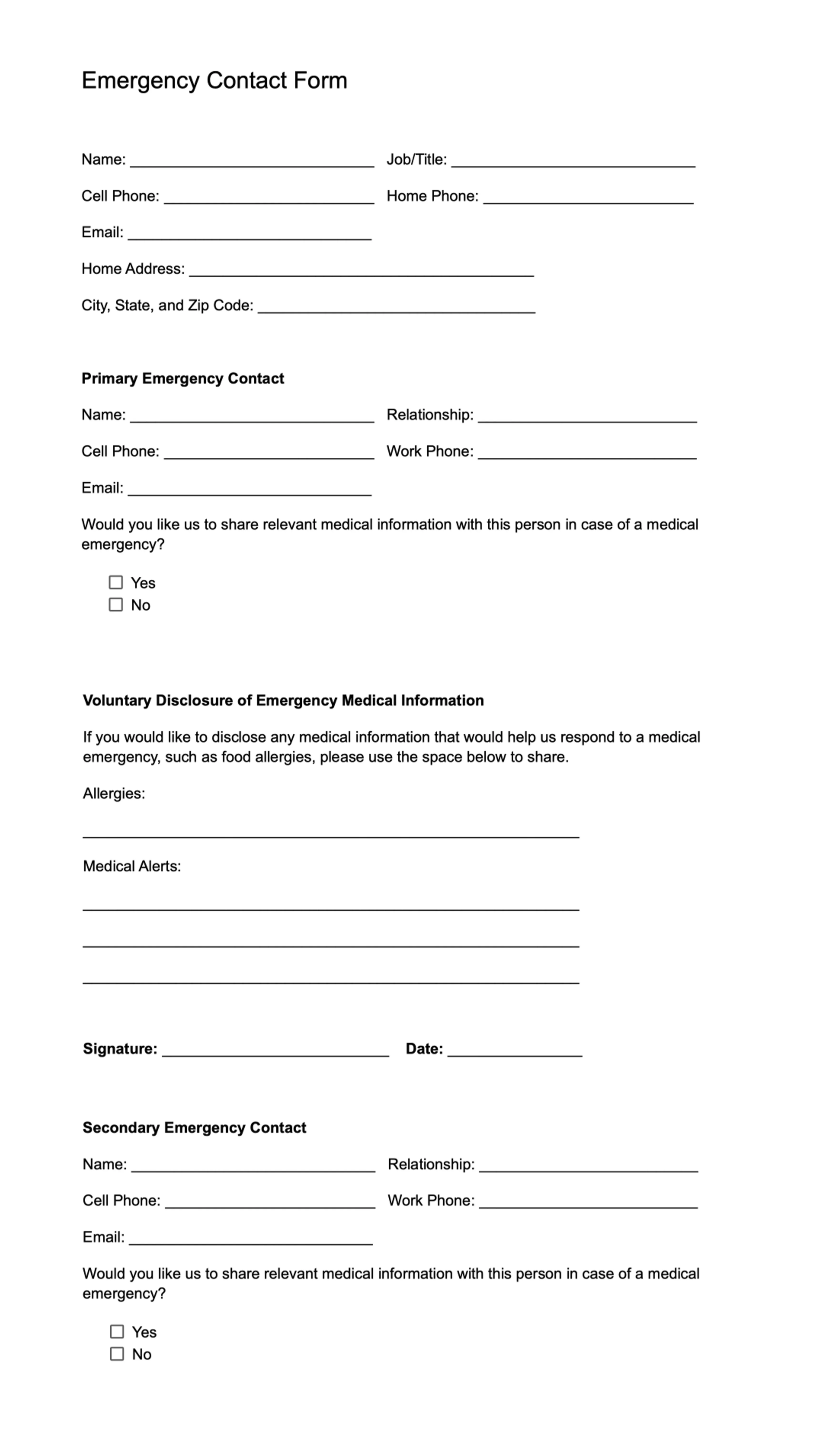
What do you do if your employee gets sick at work and they can’t drive themselves home? Or what if they haven’t shown up in multiple days? When things like this happen at work, you’ll want to know who to call. A great way to make sure you have this information is by creating an employee emergency contact form. In this article, we’ll teach you how to make one.
An employee emergency contact form is an onboarding document that employees can fill out to provide you with their emergency contact information. They can also provide any other information that they think you might need to know in case of an emergency, such as food allergies or allergies to any medications.
To keep this form and all of your other onboarding forms organized, consider using an HR software like Eddy. With Eddy, you can upload documents and send them to your new hires where they can fill out and sign them digitally.

Below are a few ways the emergency contact employee forms help ensure your employees’ safety and wellbeing.


If your company keeps paper files, make sure to add the employee’s name, job title, or department. Although the form should always be in the personnel file, documents do sometimes get misplaced. You’ll want to be able to confirm who the form belongs to.
Having more than one emergency contact is helpful in case your first contact doesn’t answer their phone. Be sure to ask for the emergency contact’s cell phone number, their work phone number and their email. Also, ask whether you can share medical information with the emergency contact, and what their relationship is to your employee.
Just like the primary emergency contact, ask for the secondary contact’s relationship to your employee, their cell phone number, their work phone number and their email. The secondary emergency contact should only be called if the primary emergency contact can’t be reached. Again, also ask whether you can share medical information with the emergency contact.
You may need the employee’s home information if you’re trying to help locate the employee, or if you want to contact employees to tell them not to come in due to bad weather.
Although it can be helpful to have certain medical information, it’s very important that you make it clear with your employees that sharing any medical information is completely voluntary. You may want to add a sentence to the form explaining that the purpose of sharing information would be to help you respond to an emergency. You can also give examples, such as allergies to certain medications.
The following are some examples of situations when you may need to reach out to your employee’s emergency contact:
In some of the above situations, you’ll be able to ask the employee if they’d like you to call their emergency contact. If this is a possibility, always communicate with the employee first to make sure you contact the right person.
Eddy's HR+Payroll software has you covered when it comes to emergency contact information. Each employee fills out contact and emergency contact information when they first sign in. That way you'll never face the unfortunate scenario where you need to get in touch with an employee's emergency contact, but don't have the contact info!
You can easily avoid this scenario by using an HR software like Eddy to organize and save all of your important data and documents for each hire. With essential data stored digitally, the info you need will always be at your fingertips.